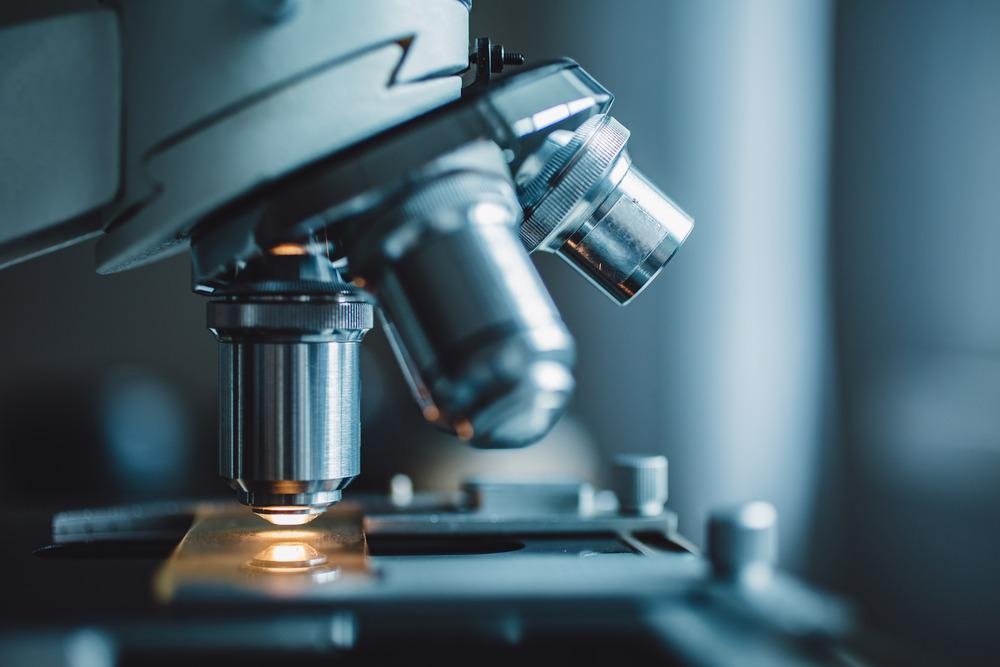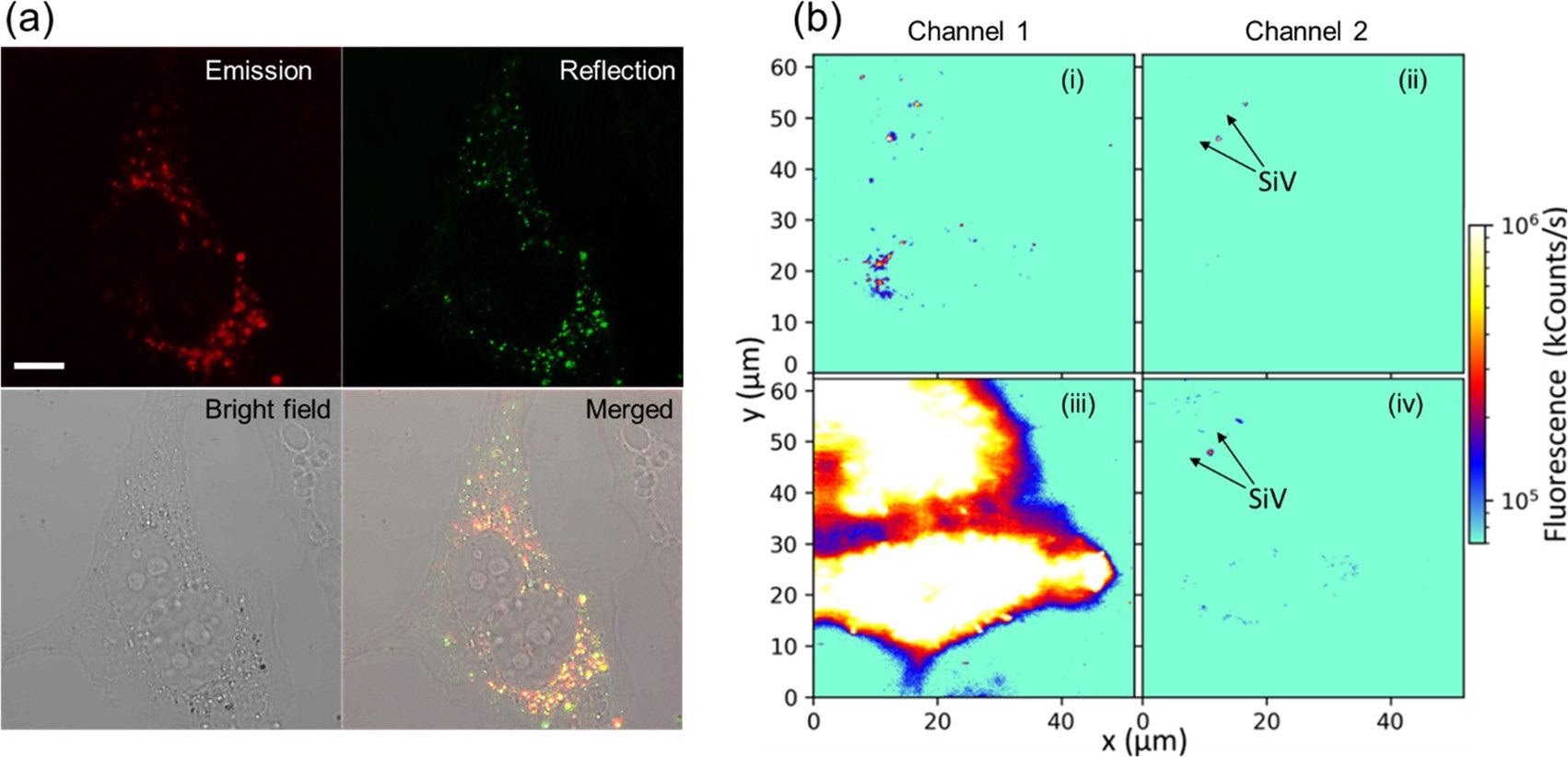In a study published in the journal Nano Letters, novel cell imaging uses for nanodiamonds (NDs) with Si-vacancy cores (SiV) were investigated using high-pressure high-temperature (HPHT) fabrication on the basis of growth free from metallic catalysts.

Study: Silicon-Vacancy Nanodiamonds as High Performance Near-Infrared Emitters for Live-Cell Dual-Color Imaging and Thermometry. Image Credit: Konstantin Kolosov/Shutterstock.com
Nanodiamonds with Nitrogen-Vacancy Centers
Fluorescent compounds are now largely utilized as markers for subcellular scanning. Their uses for time-lapse surveillance, however, are restricted by their quick fading period.
Nanodiamonds (NDs) with colored centers and great optical stability are a possible substitute. They may be utilized for biological scanning and sensory uses like super-resolution scanning or nanometric thermometry and magnetometry, based on the kind of colored center. The nitrogen-vacancy center (NV), which comprises a substitutional nitrogen atom adjacent to a carbon vacancy, is the most studied diamond color center.
Industrially accessible nanodiamonds with nitrogen-vacancy (ND-NV) come in a variety of dimensions and with varying amounts of nitrogen-vacancies.
The nitrogen-vacancy shows two charged states: neutral NV0 and negative NV–, both of which exhibit sustained luminescence but the NV– is useful for sensory applications. Zero phonon lines (ZPLs) of NV0 and NV– are supported by wide phonon sidebands, resulting in broad emissions.
Nanodiamonds with Silicon-Vacancy Centers
Even though nanodiamonds with N-vacancy may be employed for long-term biosensing research, their spectrum clashes with numerous visual indicators and autofluorescence in cells, making multicolor scanning difficult. Nanodiamonds with negatively charged Si-vacancy centers (SiV), on the other hand, have lately garnered interest as highly effective biosensing probes owing to their appealing optical characteristics with strong near-infrared (NIR) emissions.
Thanks to its larger size compared to the carbonyl group, the Si atom substitutes two atoms and is situated in between these two vacancies. This SiV divacancy arrangement features symmetric inversion, which results in reduced strain responsiveness and leads to narrowed fluorescence.
Owing to the poor electron–phonon connection, the strong ZPL dominates greater than 70 % of the Si-vacancy emission. In nanodiamonds, near-infrared Si-vacancy emissions enable deeper tissue permeation and in vivo bioimaging. Furthermore, the Si-vacancy ZPL crest location shows a thermal footprint that is directly proportional to heat fluctuations.
Nanodiamonds with Si-vacancy centers are a viable contender for scanning and thermometry in biological sciences due to their near-infrared emission, small bandwidth, strong photochemical durability, and temperature-reliant ZPL.

NDSiV-polymer for dual-color cell imaging. (a) Confocal microscopy cell images showing efficient cell uptake. Emission and reflection channels demonstrated very good colocolization (λex = 561 nm, λem = 700–758 nm, λre = 556–566 nm, scale bar = 10 μm). (b) Fluorescence cell images obtained by a customized confocal microscope (λex = 532 nm) with two detection channels (1 – λem = 575 nm and longer, 2 – λem = 720–760 nm). © Liu, W., Alam, M. N. et al. (2022).
Fabrication Approach of Nanodiamonds with Silicon-Vacancy Centers
Nanodiamonds are typically manufactured using HPHT expansion in the company of catalytic transition metals or through chemical vapor deposition (CVD) formation.
Color centers may be added into diamonds by introducing imperfections during the development process or by ionic injection. Metal-catalyzed production is preferred for the creation of fluorescent nanodiamonds because metallic atoms may induce extra imperfections into the crystalline framework, deteriorating the characteristics of the color centers.
A process like this is based on converting organic and hetero-organic materials into diamonds. This method enables the manipulation of nanodiamond sizes and color center intensities.
In this study, the researchers demonstrated the creation of nanodiamonds with Si-vacancy centers from a homogenous solution of naphthalene, detonation nanodiamonds (3–4 nm), octafluoro-naphthalene, and tetrakis(trimethylsilyl)silane, which is utilized as a dopant. The addition of fluorine-containing chemicals to the development resulted in a decrease in nitrogen-vacancy in nanodiamonds.
To increase the outputs of the nanometric portion of diamond, detonating nanodiamonds were used as seeds in the HPHT process.

NDSiV-polymer for living cell thermometry and intracellular tracking. (a) Custom-built confocal image of a living A549 cell with uptaken NDSiV-polymer nanoparticles. (b) Position of ZPL peaks of NDSiV-polymer at 25 and 37 °C. (c) Trajectory of NDSiV-polymer tracked in intracellular space. © Liu, W., Alam, M. N. et al. (2022).
Key Findings of the Study
In this paper, the researchers presented live-cell two-color scanning, thermometry, and monitoring uses of nanodiamonds bearing only SiV and no other color centers created using the enhanced HPHT approach free from metallic catalysts.
Near-infrared emitters were created in this manner using a singular strong emission pulse. These nanodiamonds with Si-vacancy centers were covered with a biological polymer derived from proteins, which provided emulsion stability in buffers, water, and cell medium.
Such nano-emitters have NIR fluorescence, a crisp ZPL, and good fluorescent stability, making them suitable for live-cell surveillance and monitoring.
High-pressure high-temperature ND-SiV was detected for the first time in two-color scanning and monitoring tests within live cells for as long as 90 minutes without fading. For the first time, thermometry with nanometric diamonds having Si-vacancy centers was explored in water and cells, and a novel singularity of ZPL shift with temperature was discovered.
The team sees ND-SiV as a promising tool for subcellular imaging, completely optical thermometry, and tracking, making them an intriguing subject for biological research. However, thermometry using ND-SiV would still need extensive and comprehensive research. As nanodiamonds may also be employed for medication administration, merging all of the shown features of the ND-SiV system opens the door to theranostic applications.
Reference
Liu, W., Alam, M. N. et al. (2022). Silicon-Vacancy Nanodiamonds as High Performance Near-Infrared Emitters for Live-Cell Dual-Color Imaging and Thermometry. Nano Letters. Available at: https://pubs.acs.org/doi/10.1021/acs.nanolett.2c00040
Disclaimer: The views expressed here are those of the author expressed in their private capacity and do not necessarily represent the views of AZoM.com Limited T/A AZoNetwork the owner and operator of this website. This disclaimer forms part of the Terms and conditions of use of this website.